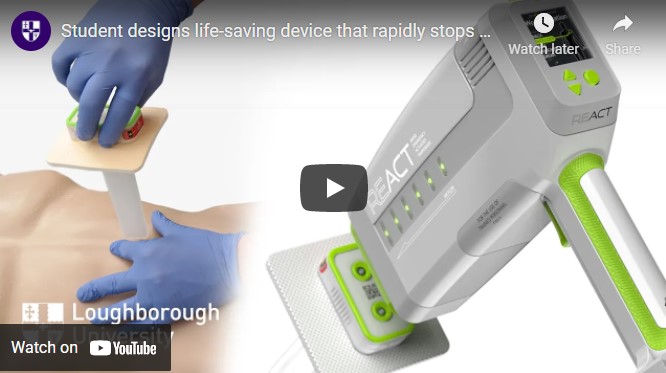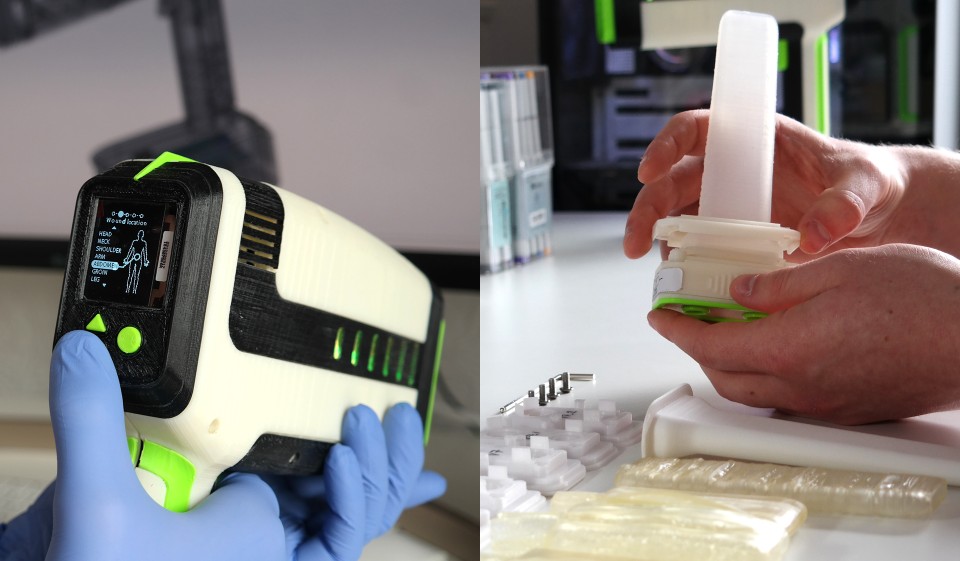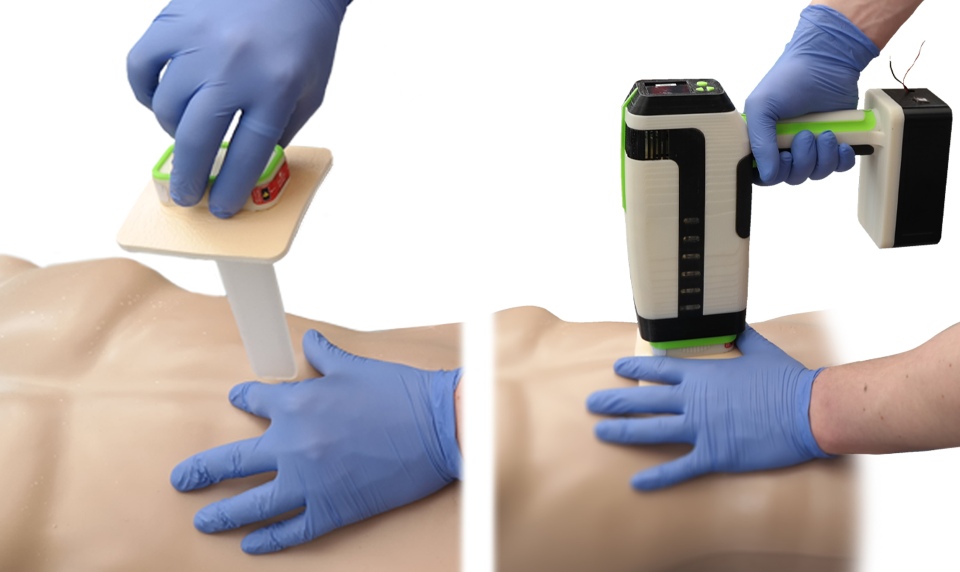A victim of a stabbing can bleed to death in just five minutes, so the priority for first responders is to control bleeding from the wound.
The police are often the first emergency personnel to arrive at a scene, so the speed at which they administer bleed prevention treatment is paramount to increasing the chances of survival.
Joseph Bentley, a final year Product Design and Technology student, has designed REACT – a new method for rapidly stopping catastrophic blood loss from a knife wound that could be carried out by first responding police officers while waiting for an ambulance.
Applying internal pressure is key when dealing with stab wounds and REACT, which stands for ‘rapid emergency actuated tamponade’, is based on this principle.
REACT is comprised of two parts: a medical-grade silicone sleeve, known as a ‘tamponade’, and a handheld device called an ‘actuator’.



